The Onze-Lieve-Vrouwe Cathedral (The Cathedral of Our Lady) is a Roman Catholic church in the historical centre of Antwerp in Belgium. The Onze-Lieve-Vrouwe Cathedral is the largest cathedral in the Netherlands and Belgium and also the largest gothic building. The cathedral is famous because of the four original paintings made by Pieter Paul Rubens. Did you know the cathedral was never finished building? Or that the Groenplaats, the central square south of the cathedral used to be a cemetery? Read the article to discover more secrets about the cathedral in Antwerp.

Table of Contents
History
The history of the Onze-Lieve-Vrouwe Cathedral starts in the 7th century when it started as an early Romanesque chapel. In 1124 the chapel became a Romanesque church and in the 14th century they demolished the old church. Between 1352 and 1518 they started building a new gothic church. In 1420 the floor of the church was raised to protect against floods. In earlier years the church was damaged by water several times during spring tides of the Schelde river (Mannaerts, 2016).
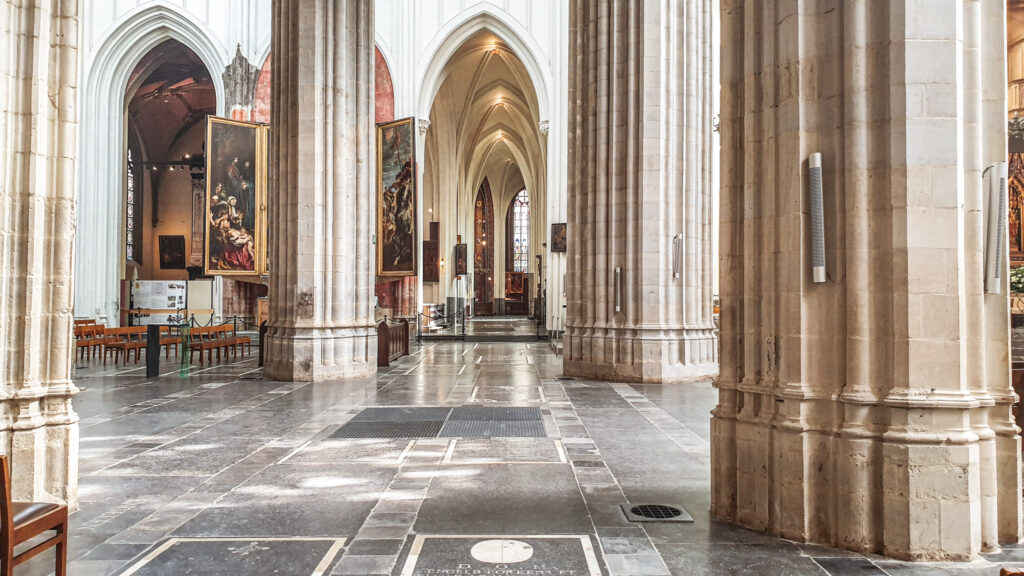

Towers of the Onze-Lieve-Vrouwe Cathedral
The construction of the two towers started around 1420-1430 on the west side of the church. A part of the graveyard on the Handschoenmarkt was destroyed to make space for the towers to be built. Peeter Appelmans was the architect that designed the north and south tower. They started building both towers but in 1475 they stopped the construction of the south tower. New independent parishes were established in 1477 in Antwerp. The Onze-Lieve-Vrouwe cathedral lost parishioners because of these new developments and therefore loss of income. In 1502 they restarted construction of the north tower and was finished in 1518.
During the Golden Ages, rich crafts and guilds preferred to stand out by having their own altar built in the main church of the city, the Onze-Lieve-Vrouwe Cathedral. Because of these preferences the cathedral used to have 57 altars. The cathedral was considered to be too small and extension was needed. New plans were made to make the cathedral wider on the south side.
The fire of 1533
On the night of October 5th and 6th in 1533, a fire breaks out in the Onze-Lieve-Vrouwe Cathedral due to a badly extinguished candle. The extension is postponed because the restoration takes precedence. To make the investment profitable, the church started to built 30 houses against the exterior wall of the cathedral. Most houses came with a shop front. As a result, the Onze-Lieve-Vrouwe Cathedral was hidden behind these houses. The Groenplaats, the square at the south side of the cathedral, was left open. There were no buildings allowed so natural light could enter the cathedral.
They never finished building the south tower because the extension of the cathedral never took place. There were not enough financial resources after the restoration. It took an entire century to finish the north tower, now the largest tower. If you look more closely the tower itself is a piece of artwork. The rich decorative elements are designed in gothic architectural style and mixed with the later renaissance architectural style additions.
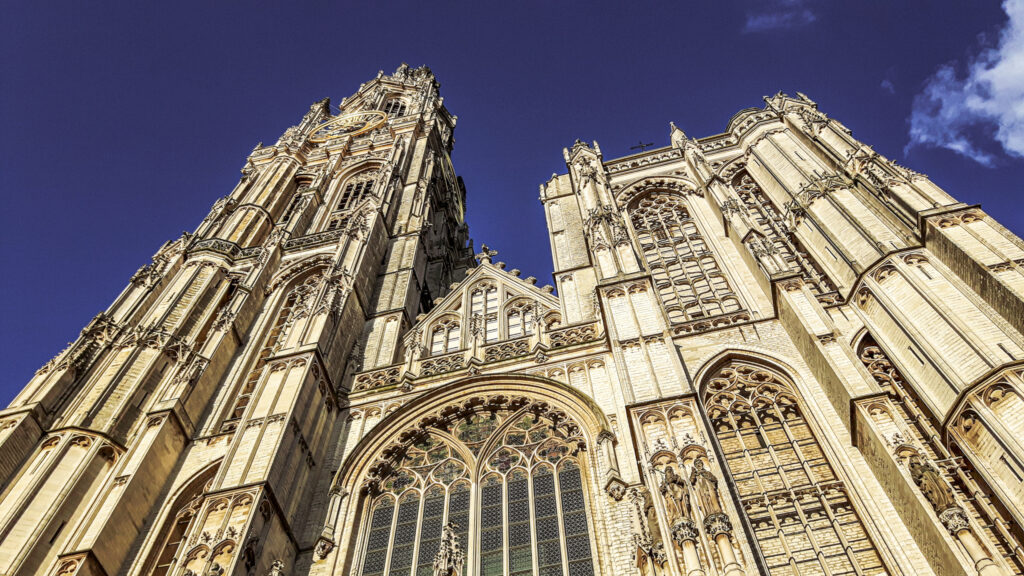
The bells
The oldest bell dates back to 1316 and used to be the bell of the former Romanesque church tower. This bell is now displayed at the Vleeshuis Museum in Antwerp. The oldest bell at the Onze-Lieve-Vrouwe Cathedral is Gabriel, and made in 1459. The largest bell is Carolus, made in 1507, and it served as storm bell and was only used during important festivities. The Carolus weighs 6 tons and 16 men were needed, spread over four floors, to ring the bell.
Urban development
The Handschoenmarkt and Groenplaats used to be two cemeteries. The cemetery at the Handschoenmarkt has been cleared in 1617. In 1784 the emperor Josef II ordered that cemeteries in the city were not allowed anymore because of hygienic reasons. The graveyard at Groenplaats was demolished and some of the graves were moved to another graveyard outside the city, Schoonselhof. The current public square Groenplaats was built instead.
The urban development vision of the 19th century described the cathedral as an important historical- and cultural monument for the city of Antwerp. They preferred to tear down the houses that were built against the cathedral exterior walls. In the 19th century the houses on the west side of the cathedral, and at the north and south tower, were demolished. The other houses were spared.
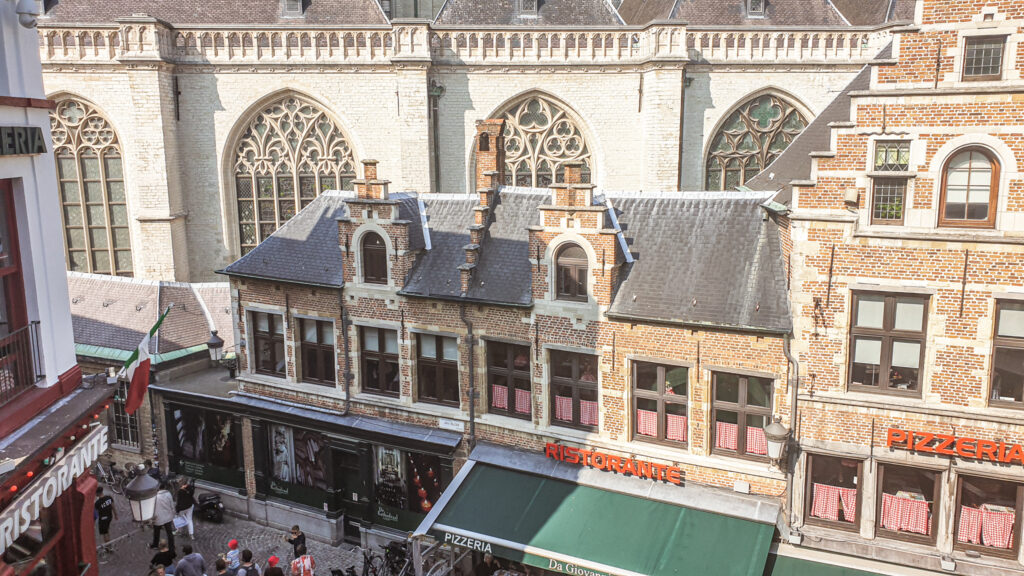
Architecture
The floor plan of the Onze-Lieve-Vrouwe Cathedral has the shape of a Latin Cross. Most gothic Catholic churches in Europe have the same Latin Cross shape, same as the Sint-Andries church in Antwerp. The Latin Cross is a reference to the cross of Jesus. The Onze-Lieve-Vrouwe Cathedral faces east, the symbol of the rising sun. The east facing high altart is a spiritual orientation. Believers enter the church at the west and walk to the east, from darkness towards light, from death towards live and from human towards Gods.
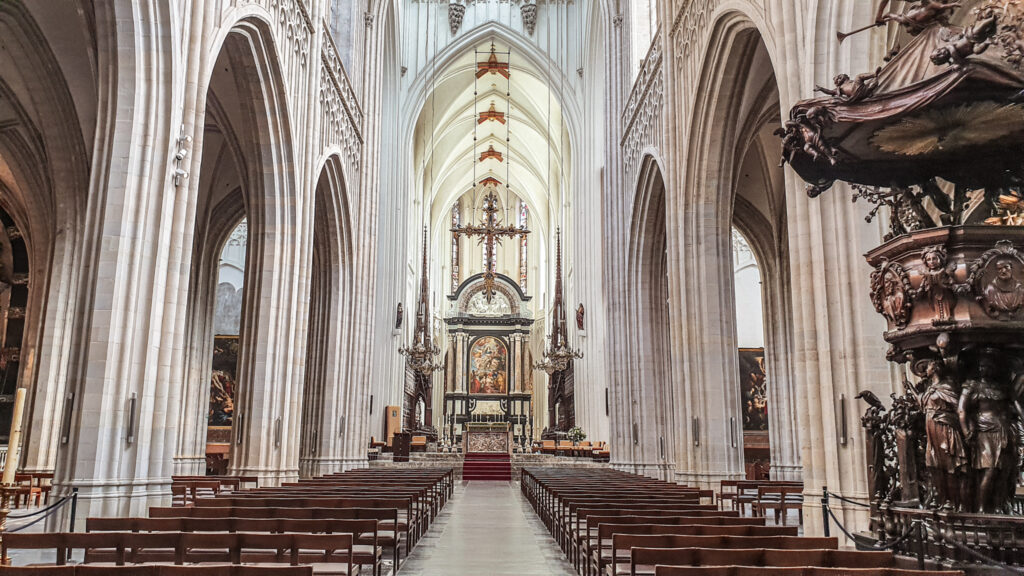
Interior architecture
The new plans for a larger church were cancelled but the church was given a higher hierarchical title. The church became a cathedral in 1550 when the diocese with the same name was established in Antwerp. Virtually nothing of the original interior has been persevered due to the iconoclasm (Beeldenstorm) of 1566 and the Calvinist regime in 1581.
In 1585 the Spaniards took over Antwerp and Catholicism was restored. The carfts and guilds restore their altars in the cathedral. Artists and painters are asked to participate. As few famous examples are painters Pieter Paul Rubens, Otto van Veen and Maarten de Vos. The Onze-Lieve-Vrouwe Cathedral displays four original paintings of Pieter Paul Rubens. The interior of the Onze-Lieve-Vrouwe Cathedral is designed in the baroque architectural style. In later decades the interior elements were mixed with architectural styles neo-gothic and rococo.
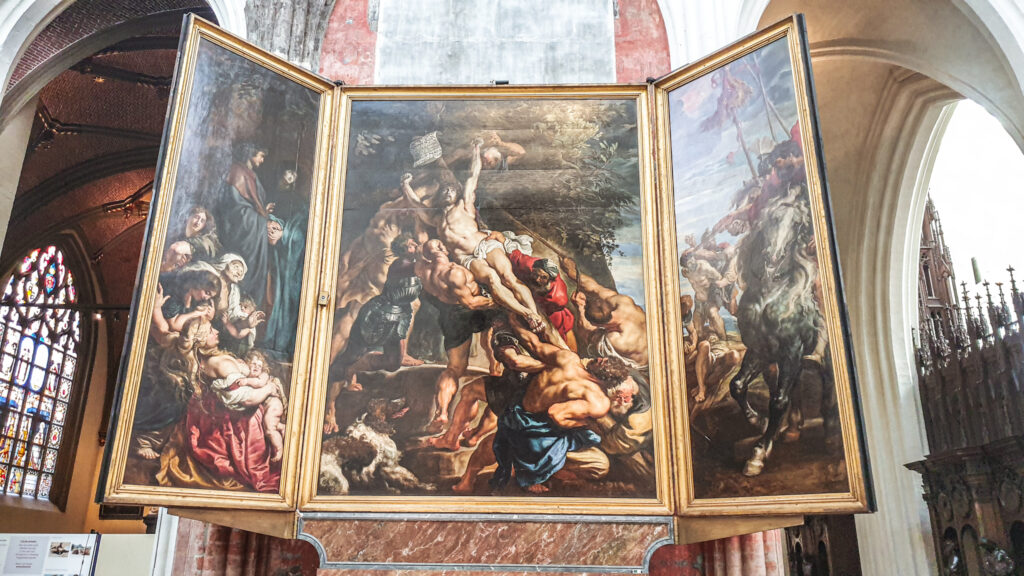
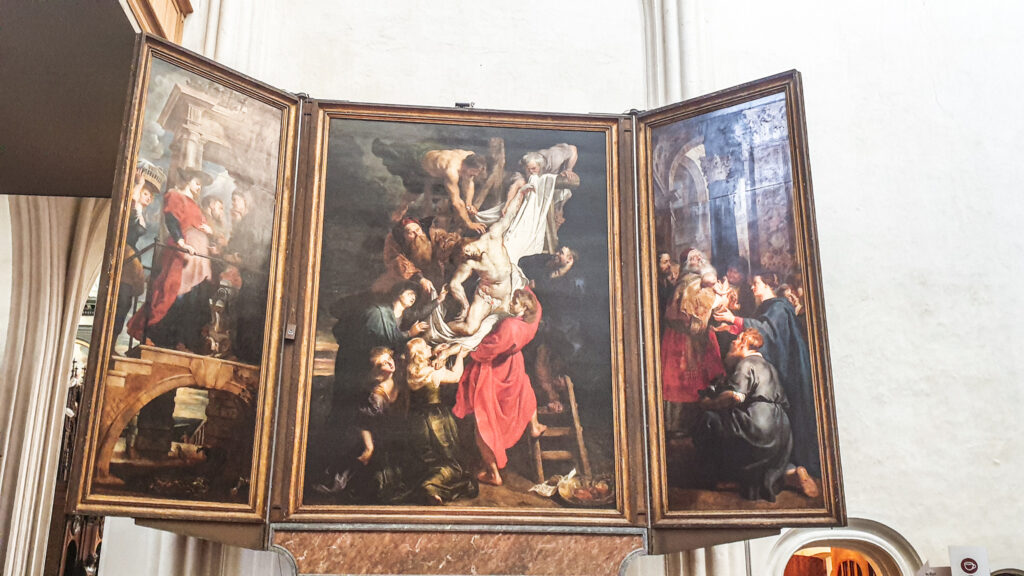
Pulpit
The wooden oak pulpit is made by Michiel van de Voort in 1713. The baroque style is mixed with naturalism but also with rococo elements. The banisters have the shape of tree trunks, branches and twigs. Nature is the most important source of inspiration. The pulpit is decorated with birds, an owl and a parrot. At the base are four female figures representing the four continents; Europe, Asia, America and Africa. The wooden pulpit is reminiscent of those in other churches in Antwerp such as the Sint-Carolus Borromeus and Sint-Andries church.
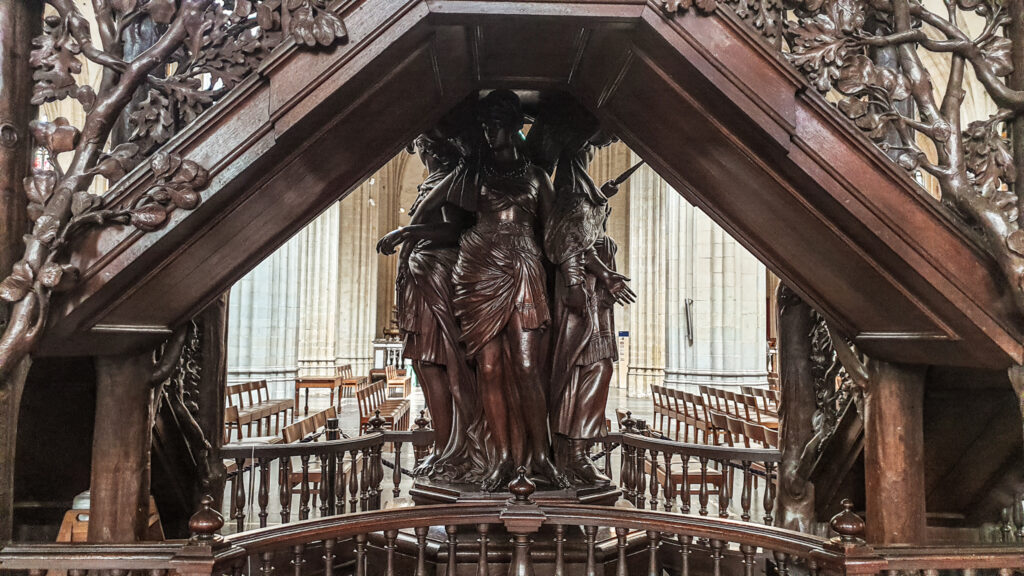
Confessionals
The original confessionals disappeared in 1798 during the French revolutionary government. Now there are 6 baroque confessionals in the Onze-Lieve-Vrouwe Cathedral that came from the Sint-Bernardusabdij in Hemiksem.
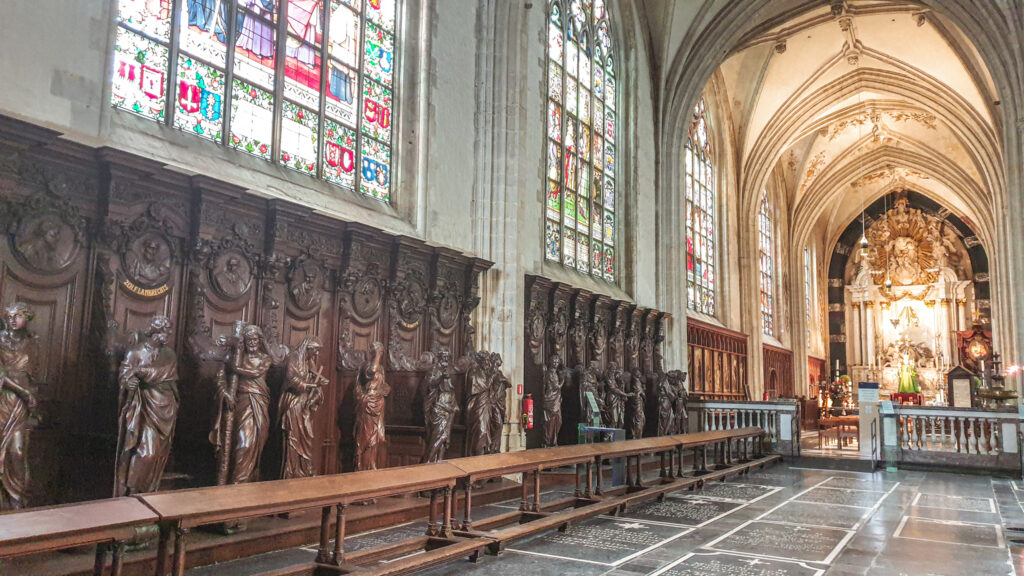
Social welfare
The city of Antwerp set-up a social welfare institution in 1458, Kamer van de huisarmen (Chamber of the poor). Four board members or chaplains were responsible for collecting and distributing the funds. The chaplains were usually rich citizens and the position was an unpaid honorary function. The institution is a precursor of the present Openbaar Centrum voor Maatschappelijk Welzijn (OCMW). The chaplains organised theatre performances at Sint-Lucasguild on the Grote Markt to collect money for the institution.
The chaplains had there own chapel at the Onze-Lieve-Vrouwe Cathedral. They used the chapel for private meetings. The bookstore today used to be the Chapel of the chaplains. Back in the day the chapel was enclosed by a stone wall. The chaplains were also responsible for managing the Maagdenhuis, the girls orphanage, the Knechtjeshuis, the boys orphanage and the foundlings in the city of Antwerp.

The Chapel of Mary
There are many chapels in the Onze-Lieve-Vrouwe cathedral. The most prominent one is the the Chapel of Mary. For over a thousands years Mary is the patroness of the cathedral but also for the city of Antwerp. Mary is honored on the Sunday after Ascension Day which is on August 15th.
The statue of Mary was damaged during the iconoclasm of 1566 and survived the Calvinist regime in 1581. A guild member had hidden the statue of Mary in his home behind a brick wall. Mary also survived the French Revolutionary regime because they had hidden her again but this time in a private cellar. The clothes of Mary are changed a few times per year according to the prescribed liturgical colours.
Tombs
Over the centuries many graves and tombs have disappeared. Many altars are removed and the empty gaps in the floor were filled by gravestones from the former Sint-Michiels abby. Two gravestones from the Sint-Michiels abby are from famous geographer and cartographer Abraham Ortelius and Rubens parents in law. The oldest tomb is from a women named Katelijne who died in 1307. The tomb is bricked into a wall to preserve her tomb.
Nello & Patrasche
Nello and Patrasche are the main characters in a novel A Dog of Flanders. It’s about a Flemish boy named Nello and Patrasche is his dog. The novel is written by English author Marie Louise de la Ramee and published under the pseudonym Ouida. The poor orphan boy Nello comes from a village nearby Antwerp, now Hoboken. Nello comes to Antwerp to sell milk with his dog Patrasche. His dream is to see the paintings of Rubens in the Onze-Lieve-Vrouwe Cathedral. The exhibition is only accessible for paying customers but Nello has no money. On Christmas Eve Nello discovers the front door of the cathedral is unlocked. He goes inside the cathedral to see the paintings of Rubens. The next morning Nello and Patrasche are found death of hypothermia in front of a painting of Rubens.
The story is extremely popular in Japan, Korea and the Philippines as a children’s classic. On the Handschoenmarkt, in front of the Onze-Lieve-Vrouwe Cathedral, is a sculpture of Nello and Patrasche. It’s made of white marble and Nello and Patrasche are sleeping under a cobble stone blanket. The last decade the cathedral became a popular tourist attraction among Asian tourists. And also the sculpture of Nello and Patrasche in front of the cathedral.
Visit Onze-Lieve-Vrouwe Cathedral
The Onze-Lieve-Vrouwe Cathedral is located in the historic city centre of Antwerp. The cathedral is iconic landmark in Antwerp and the highest orientation point of the city. The cathedral is open on weekdays from 10am until 5pm, on Saturday from 10am-3pm and Sunday from 1pm – 5pm. If you are planning to visit make sure to check the opening times on the Onze-Lieve-Vrouwekathedraal website. On public holidays the opening times can be different from regular opening times. And they have many public holidays in Belgium so please check the website!..
The admission to visit the cathedral is 8 euro (at the time of writing). Children and young adults -18 years are free of admission. Citizens of the Province of Antwerp can visit the Onze-Lieve-Vrouwe cathedral for free when presenting their Belgium ID-card.
Would you like to visit other monumental churches in Antwerp? Visit the Sint-Andries church in the fashion district of Antwerp, Sint-Andries. Or admire the wonderful decorative architecture of the Sint-Carolus Borromeus church at the baroque Hendrik Conscience square.

In The World’s Jungle – Travel Blog
Check out the monumental highlights in Antwerp or step into the world of the famous baroque painter Pieter Paul Rubens. Visit the Plantin-Moretus Museum and find out more about the well-known printers family. Discover how eight generations lived and worked in their private house, courtyard and ateliers. In de same street as the Maagdenhuis museum, de Lange Gasthuisstraat, is another museum: Mayer van den Bergh Museum. He was a private art collector and his entire collection includes more than 3000 objects. Another interesting article is about historical and unique theatres and cinemas in Antwerp.
Bibliography
Mannaerts, R. (2016). De kathedraal: de Onze-Lieve-Vrouwekathedraal van Antwerpen, een openbaring. Toerismepastoraal Antwerpen.
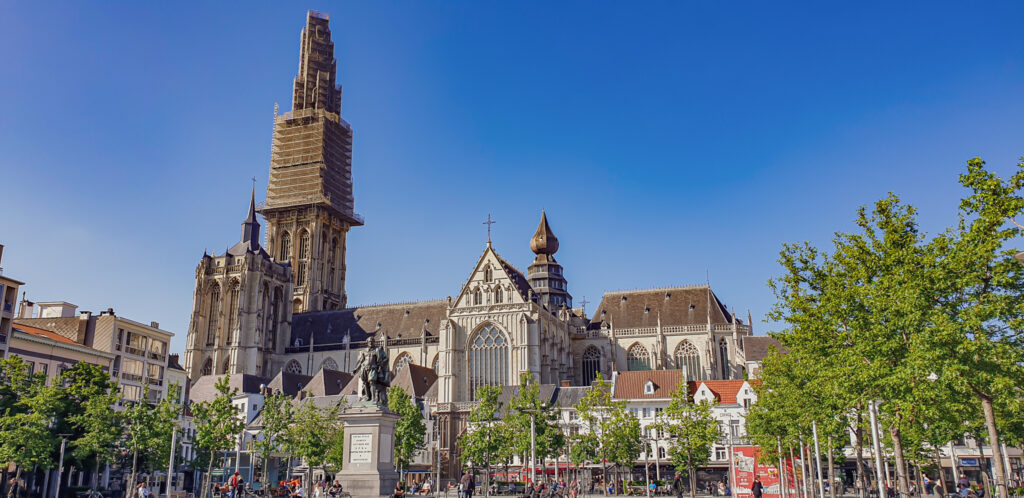
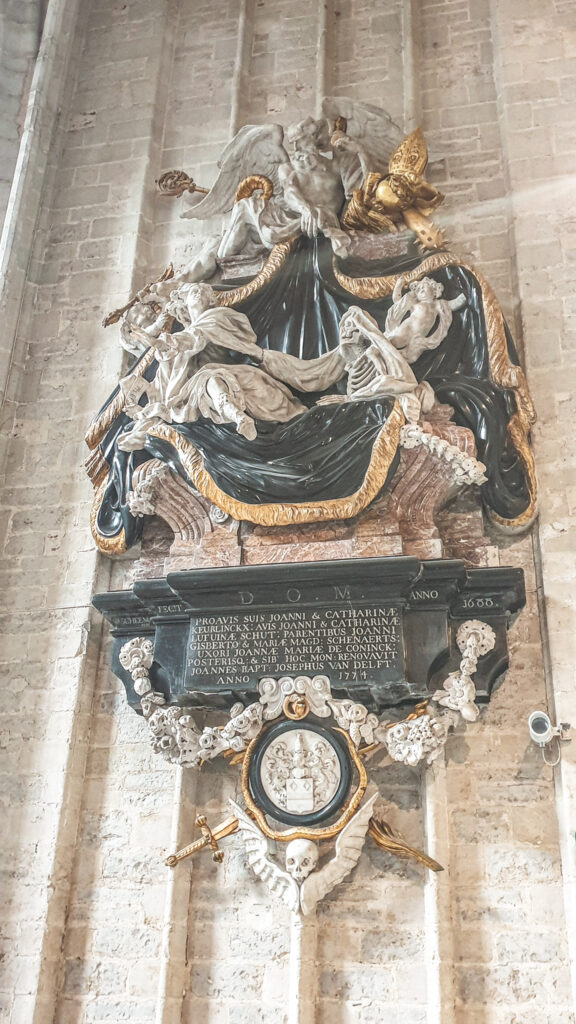
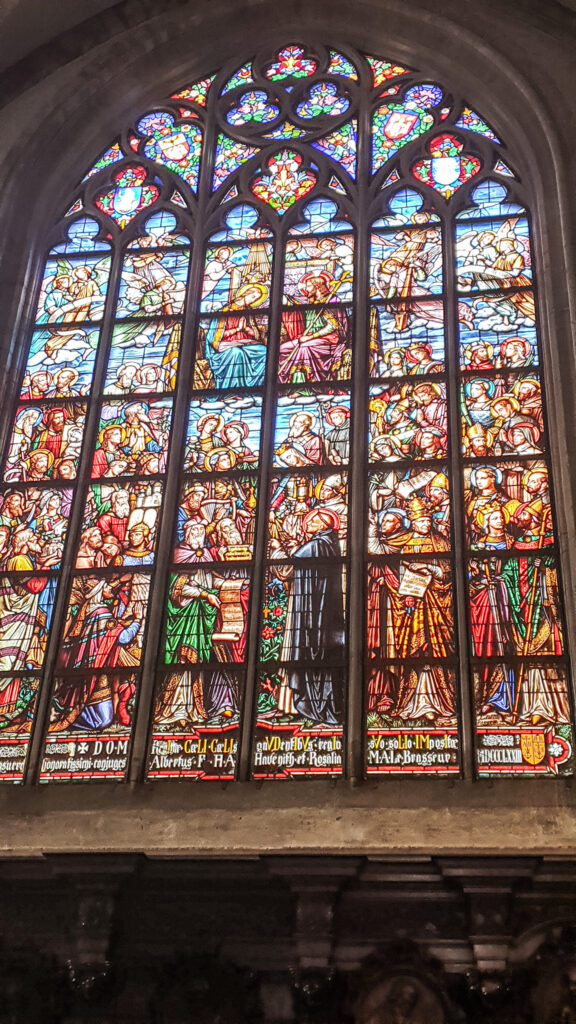
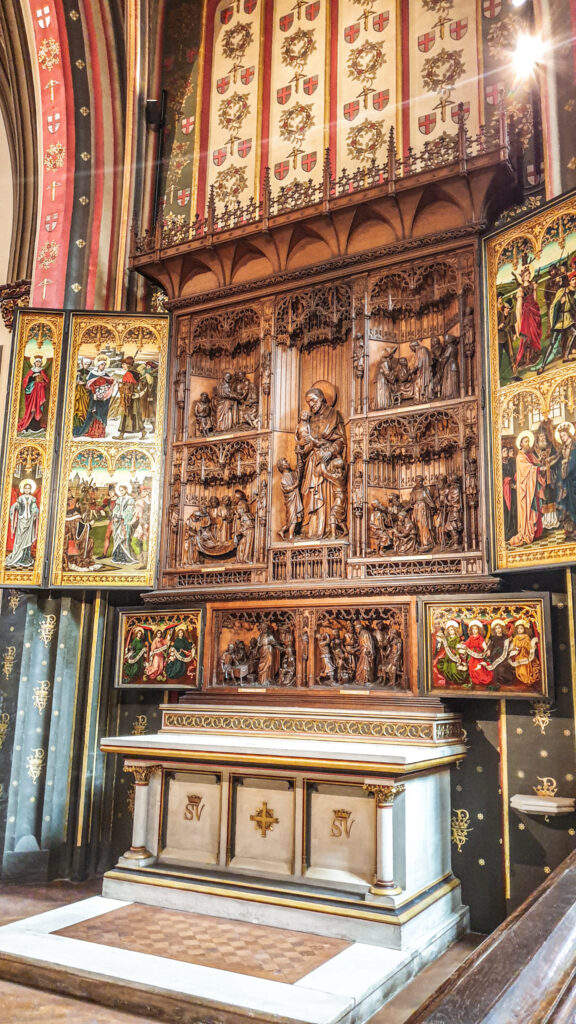

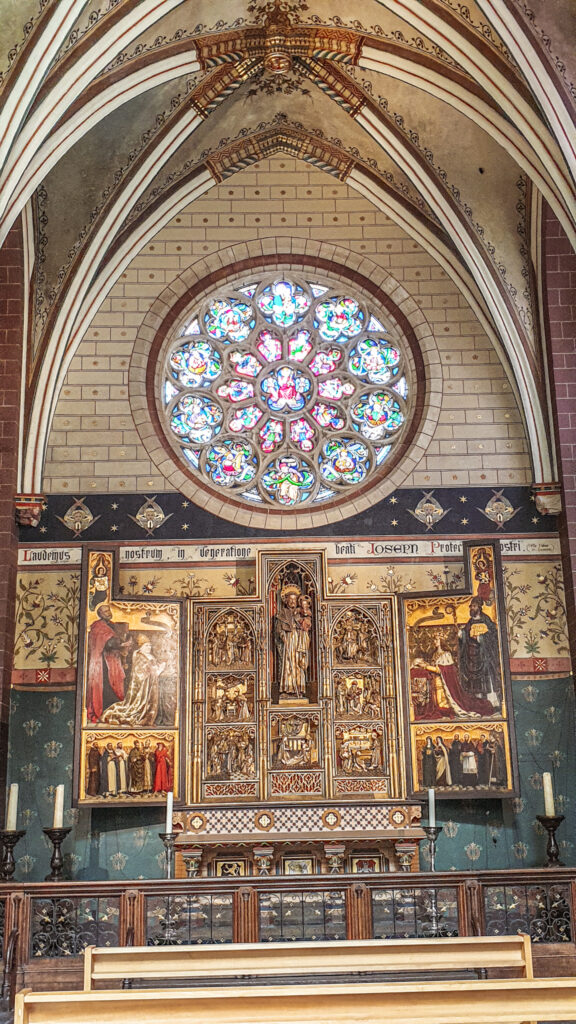

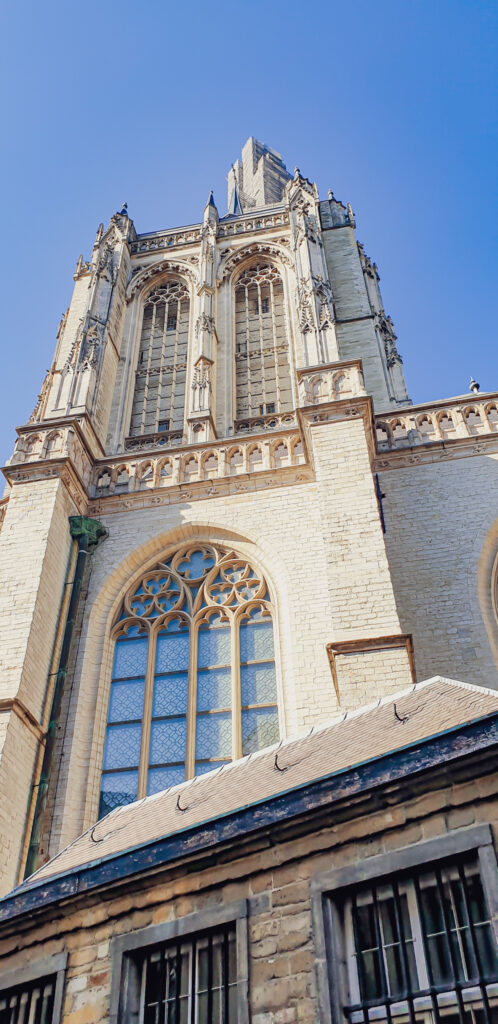
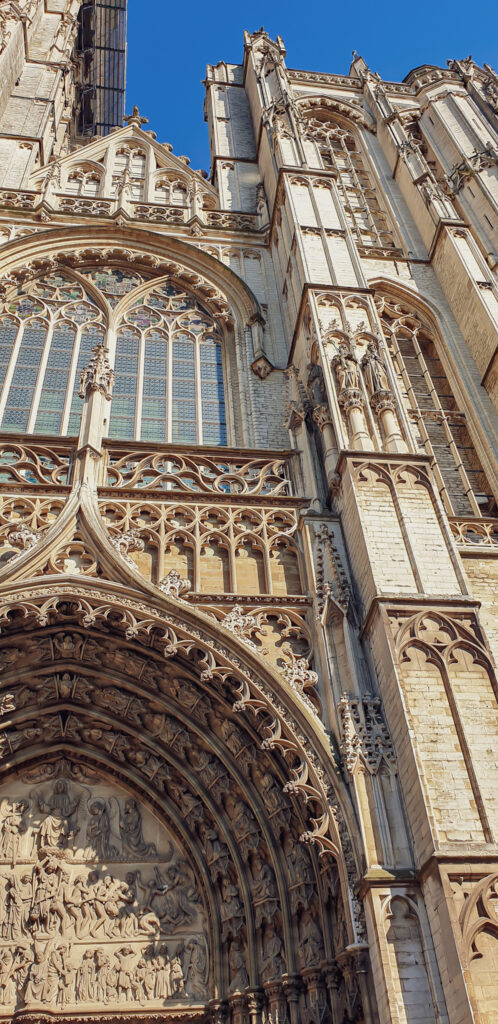
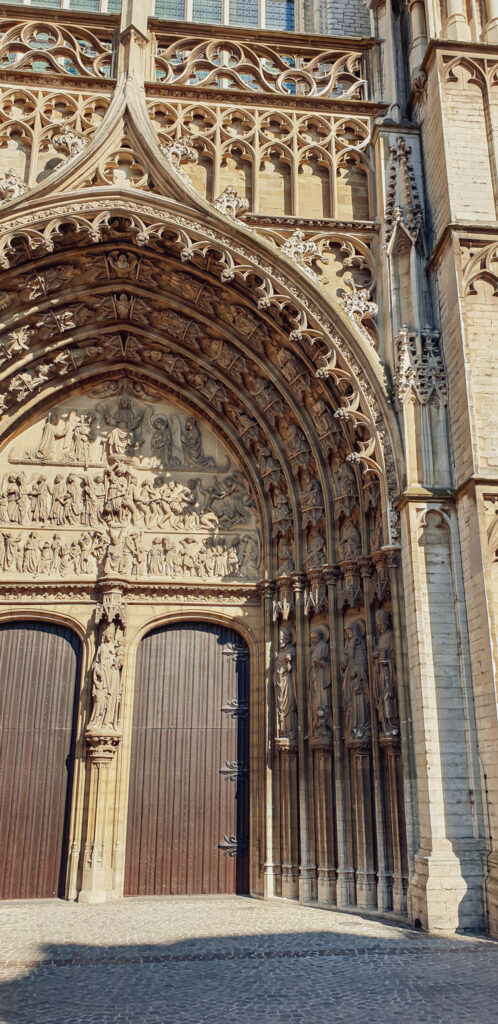

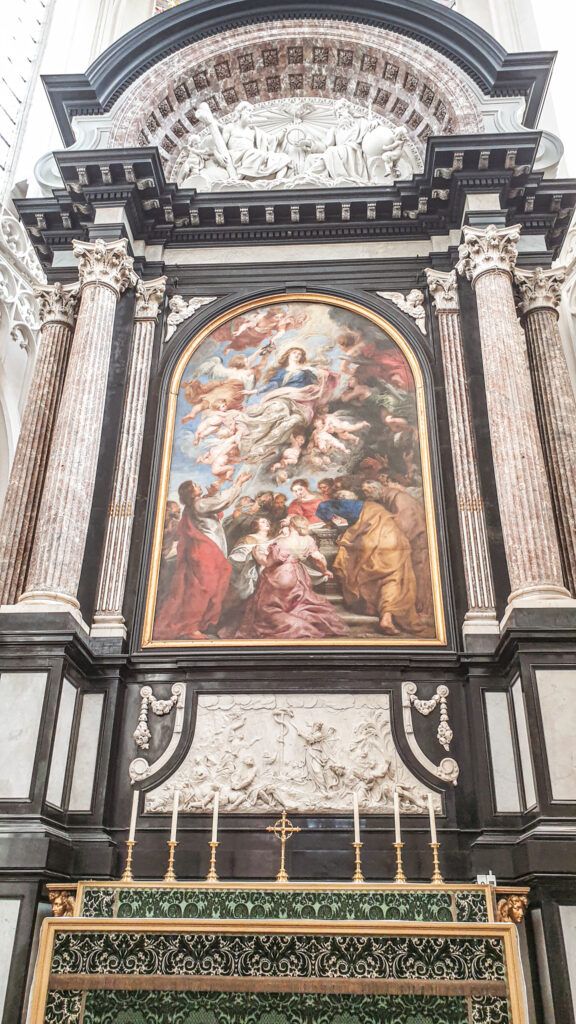
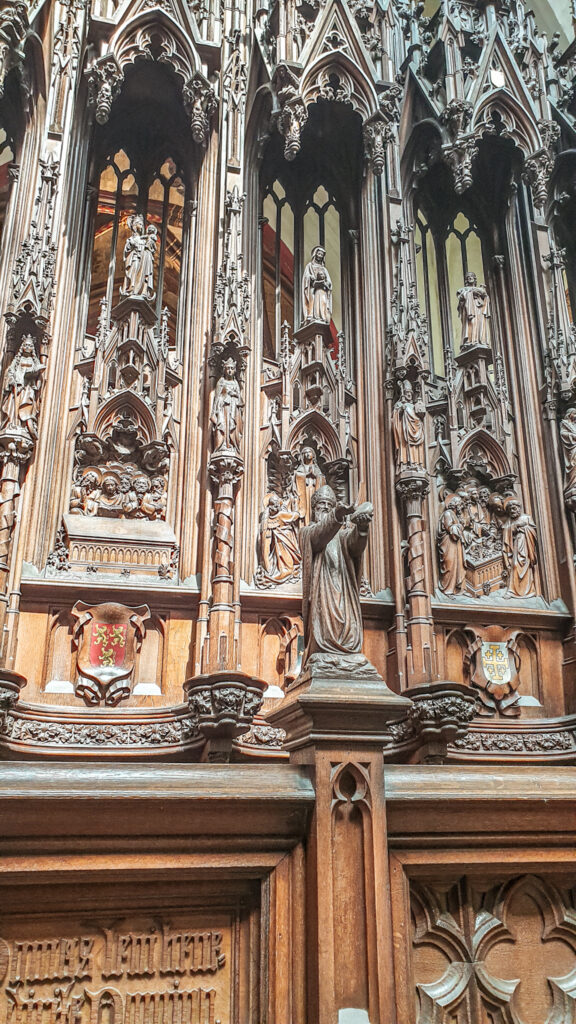
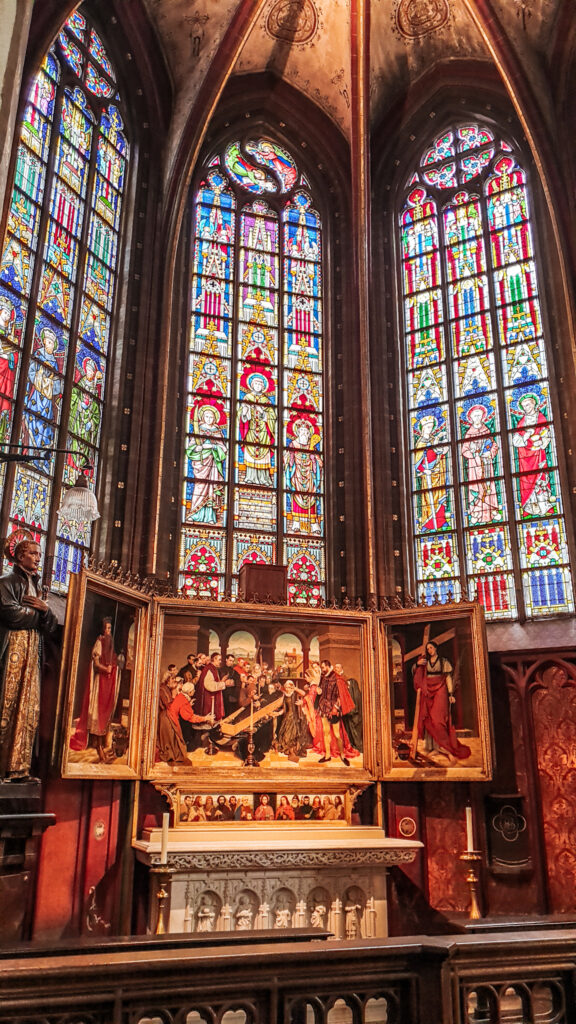
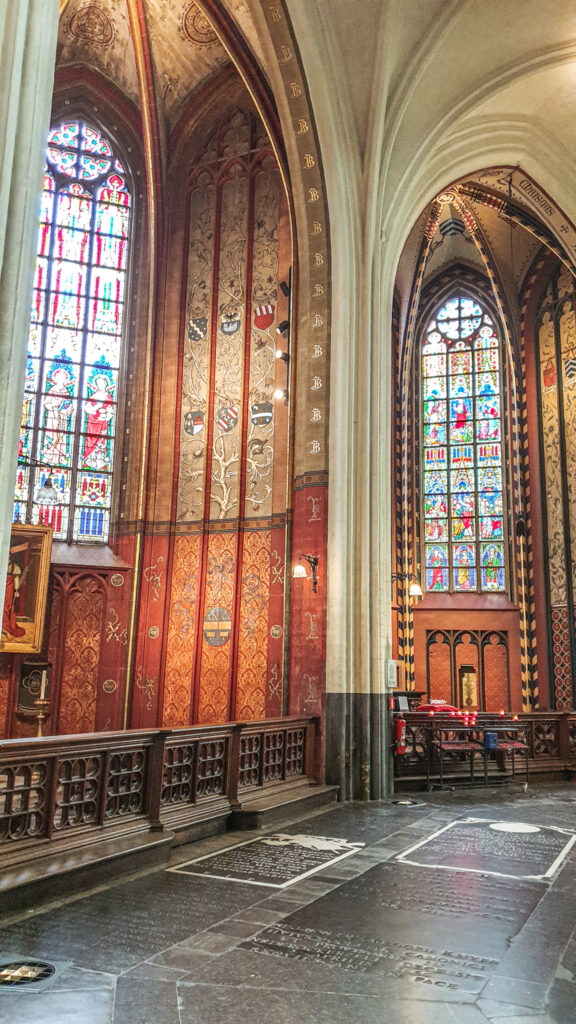

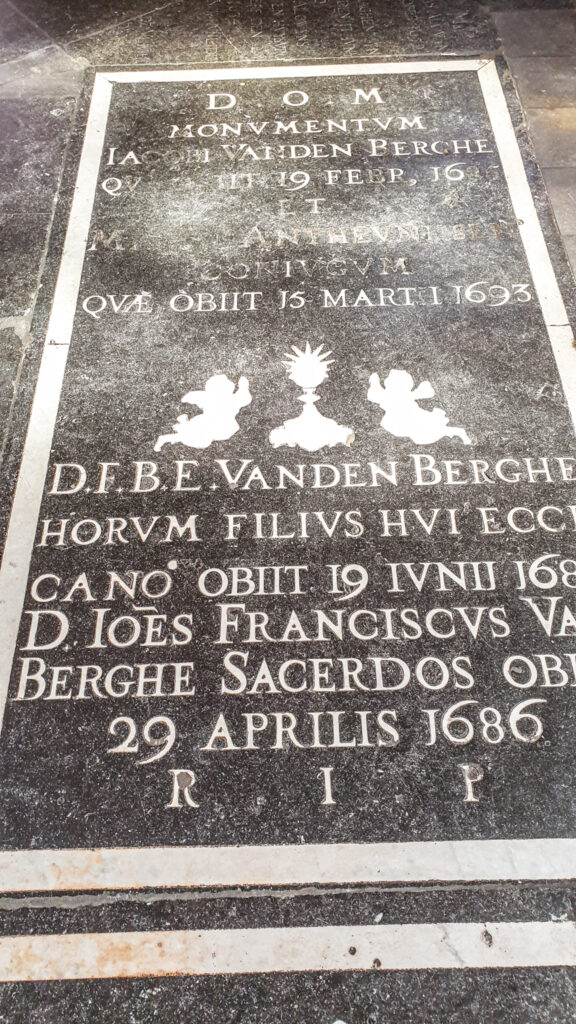
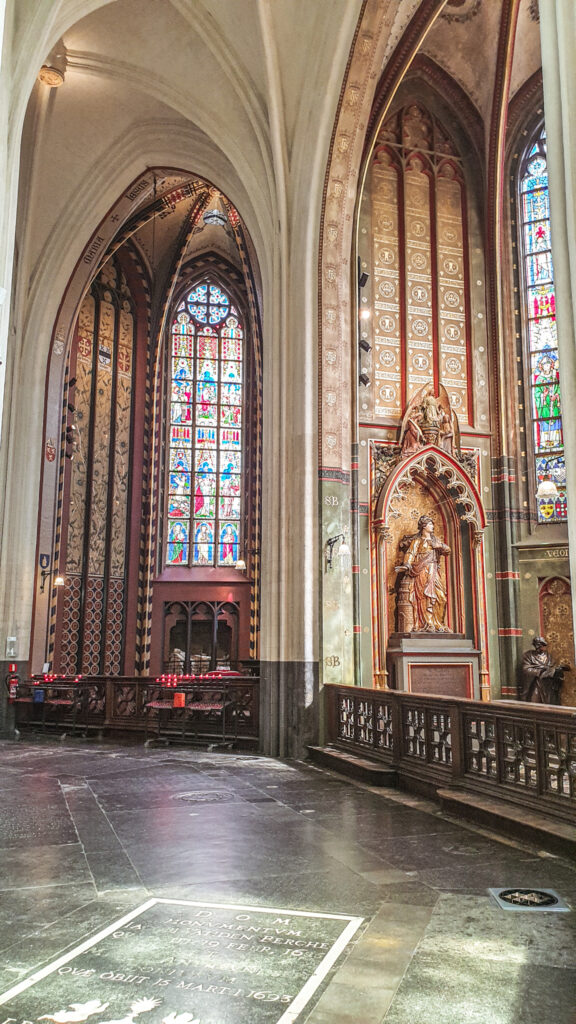
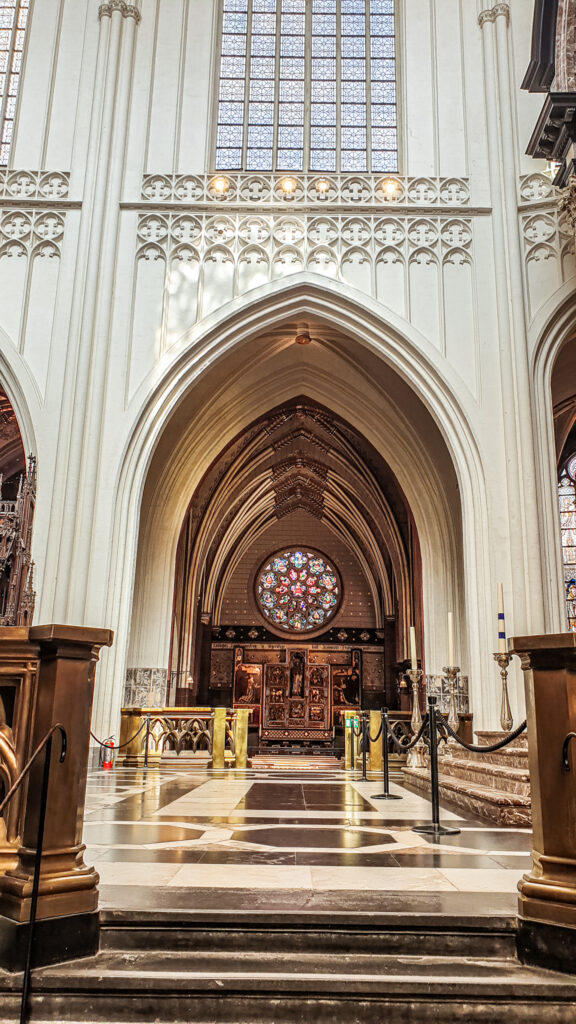

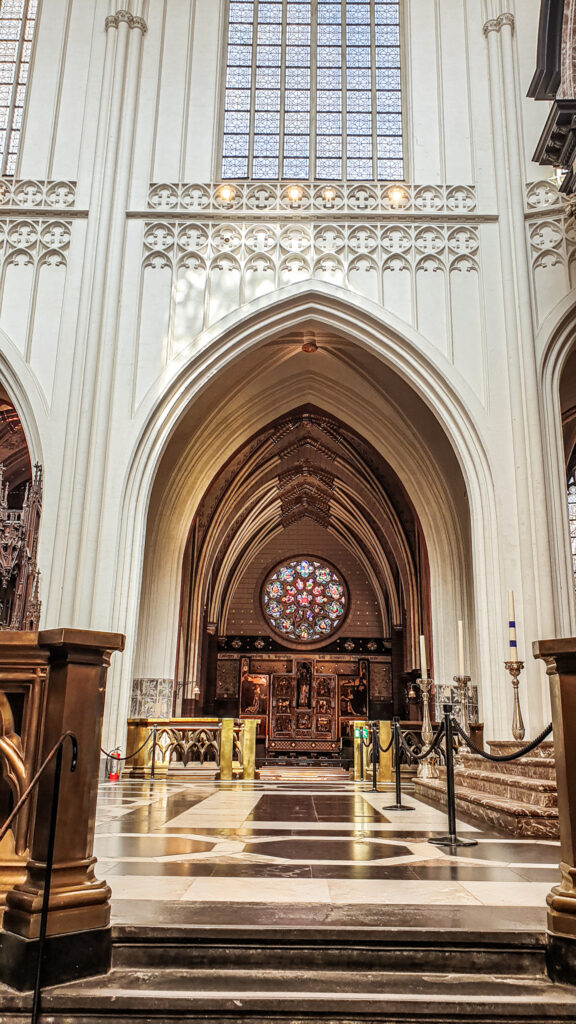
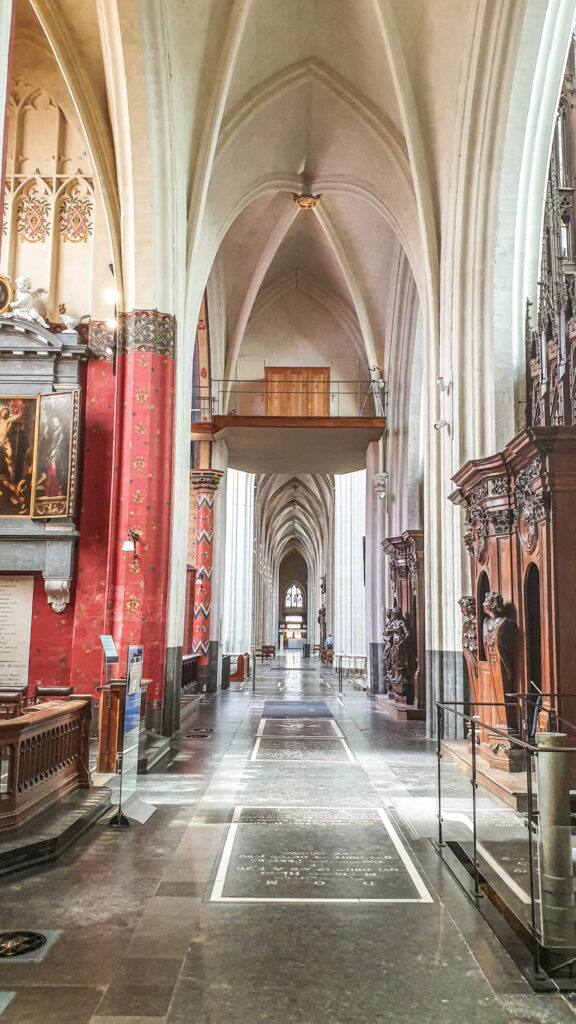
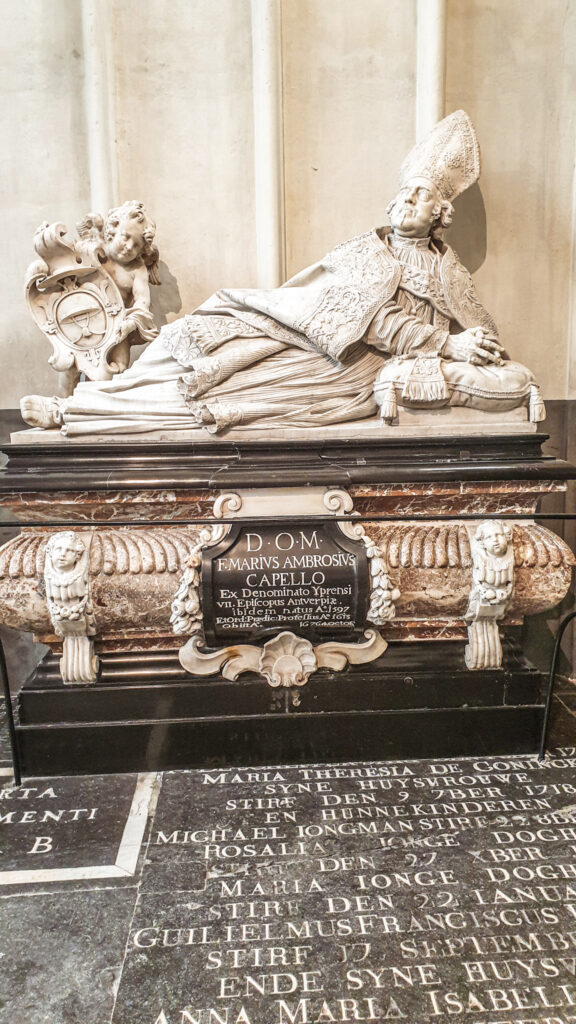
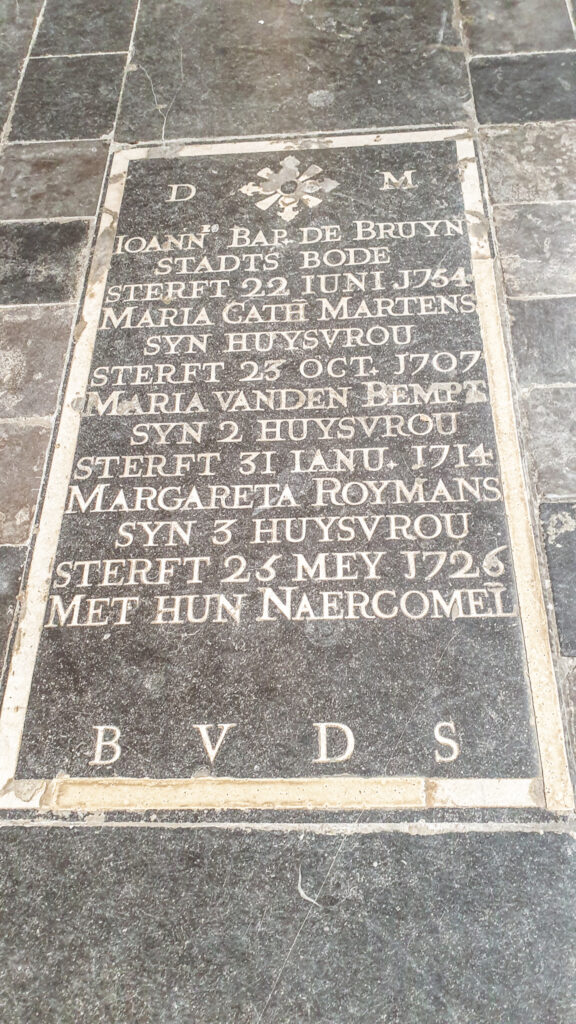
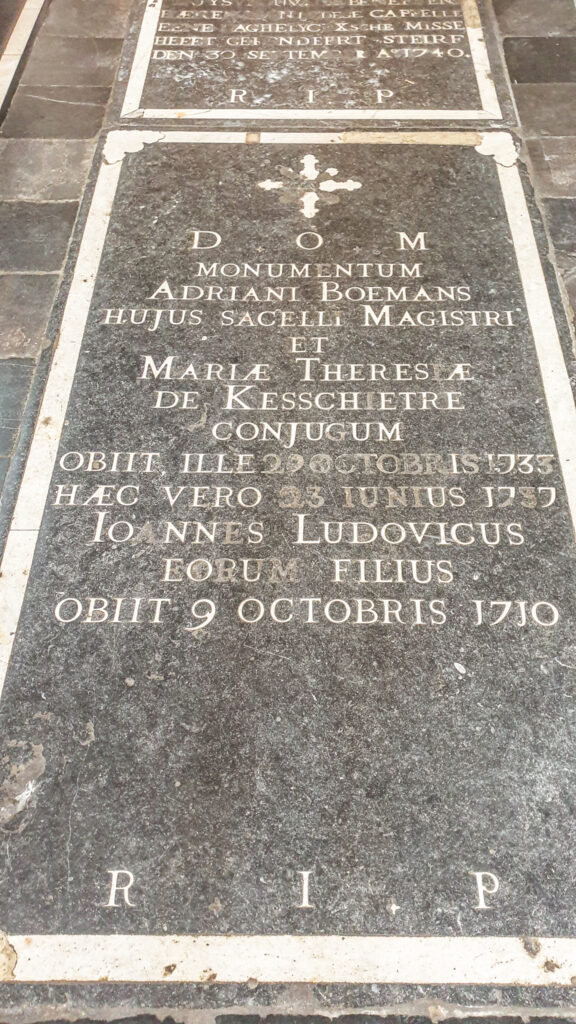

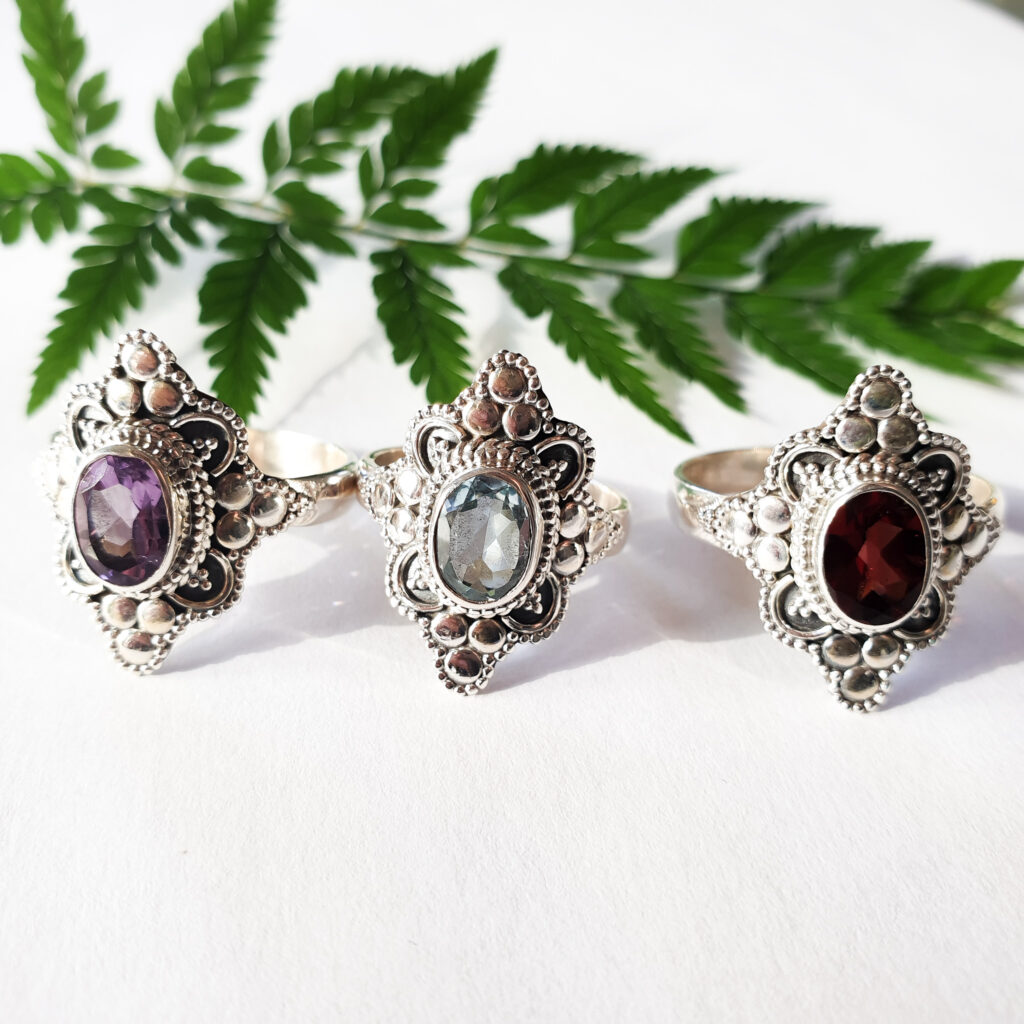
This Post Has 4 Comments
While most cathedrals are dark inside, this looks bright. Great article! I am going to Belgium next year so will add to the list.
Hola,
The cathedral is indeed very bright because the walls and ceiling are painted white. It’s well worth a visit when you visit Belgium next year. Have fun planning your trip. If you have any questions about your trip to Belgium, feel free to send me a message.
Adriana
What a stunning place – so bright and light. Belgium is on my list of places to go, so I will definitely take a trip here
Katie May x
Thank you Katie May for your lovely comment.
Adriana